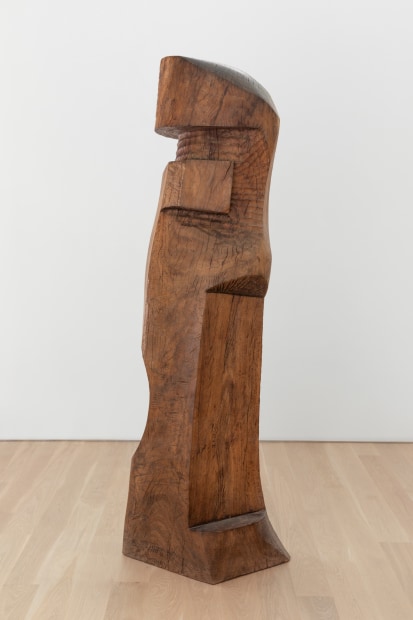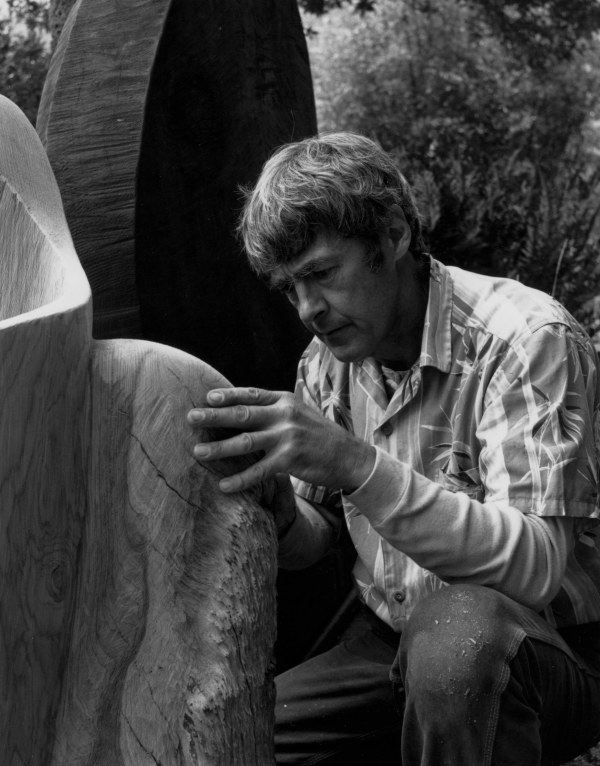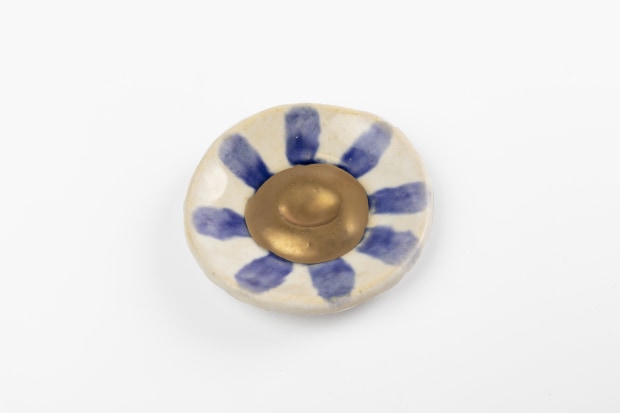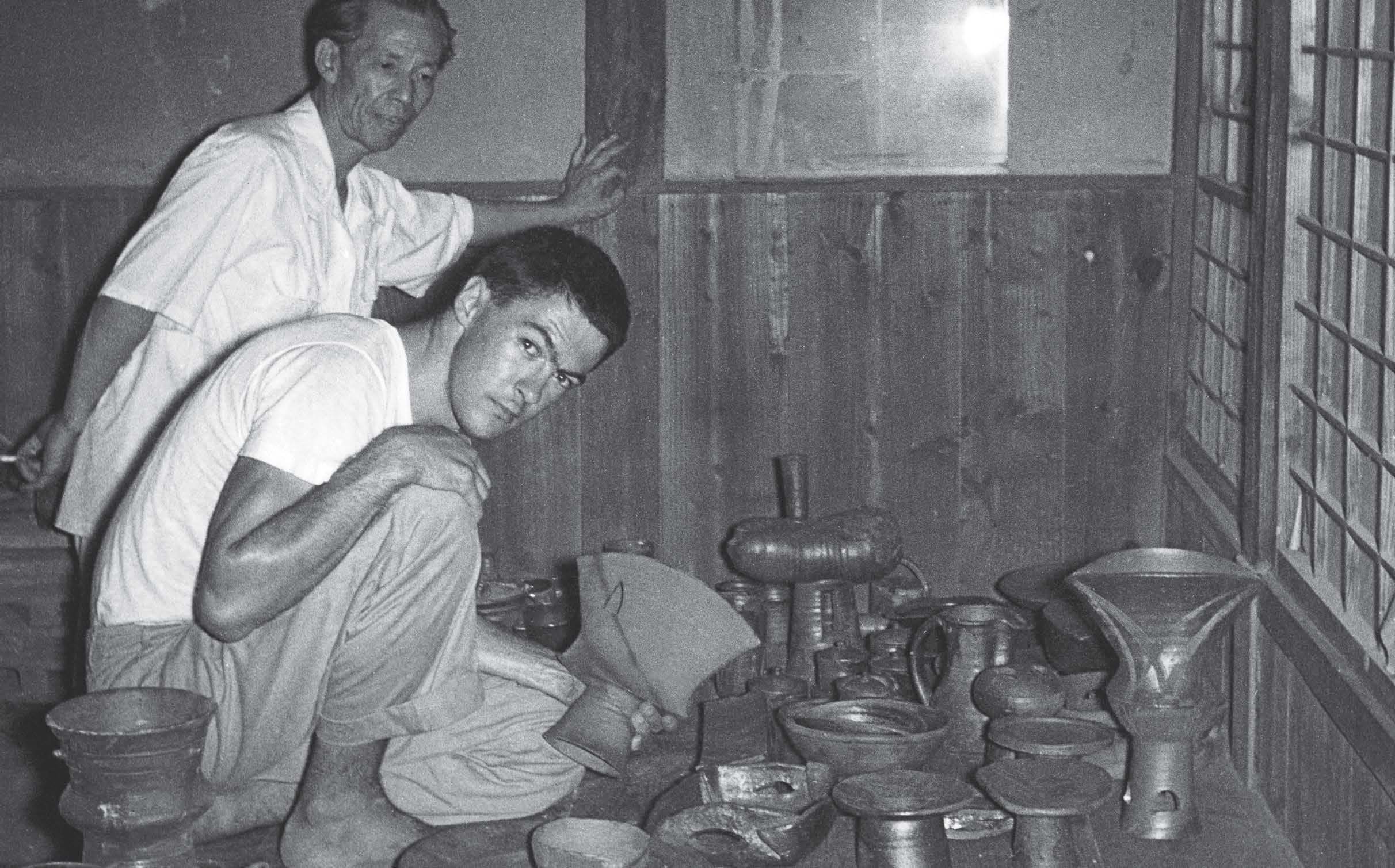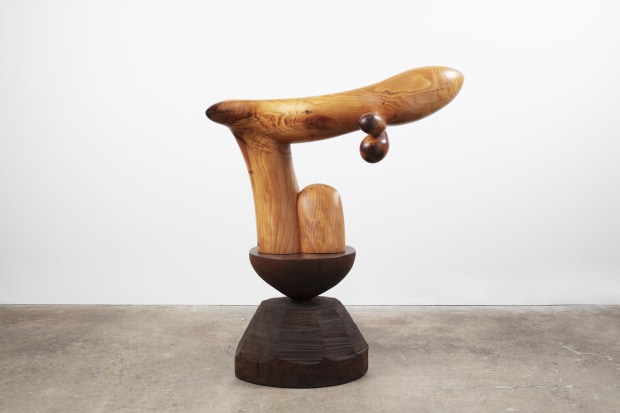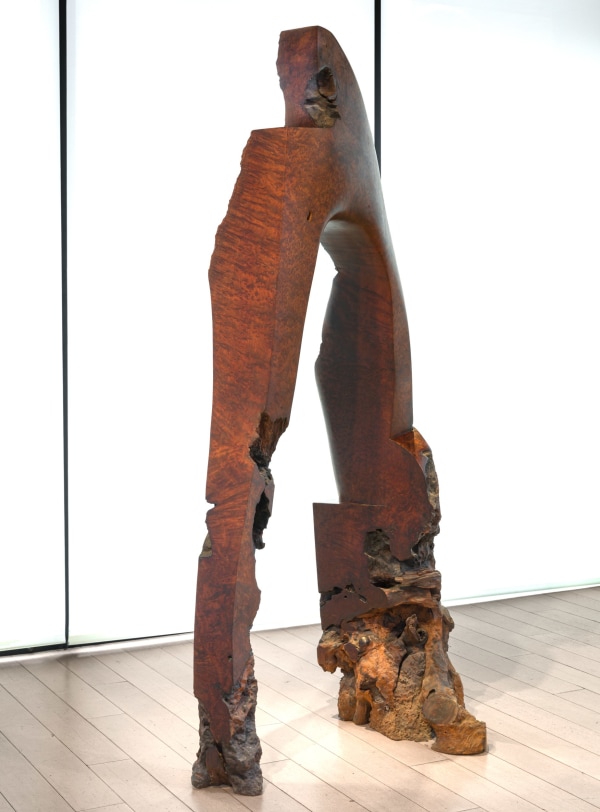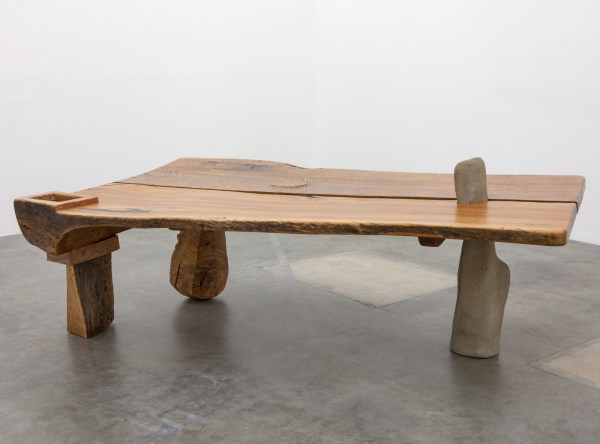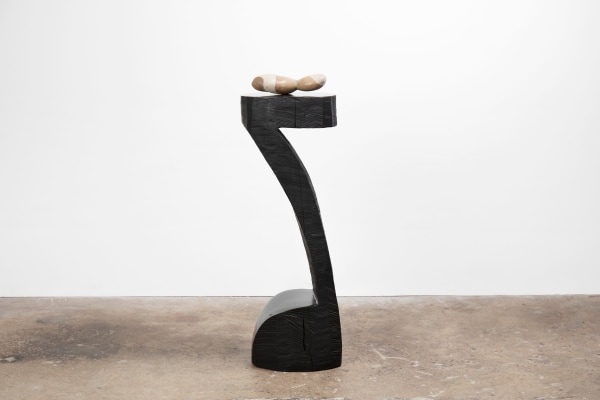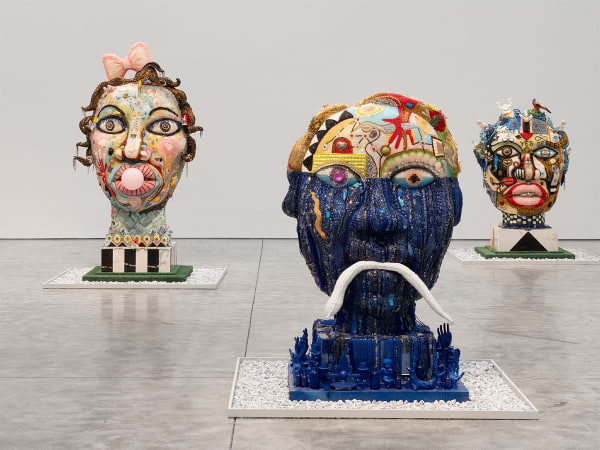JB Blunk
Past exhibition
-
-
Kasmin is delighted to announce its first exhibition of work by American sculptor JB Blunk (1926–2002), on view from October 8, 2020, at 297 Tenth Avenue. Working primarily in wood and ceramic, Blunk developed a distinct style that drew upon the Japanese principle of directness as well as an unfaltering reverence for the natural world, particularly his interest in ecology and primordial landscapes. Taking forms from antiquity and mysticism and translating them instinctively through raw, salvaged materials, Blunk produced a body of work that represents an innate expression of, and conversation with, nature. The exhibition is staged in collaboration with the JB Blunk Collection and includes nearly fifty works in ceramic, wood, and stone by the artist.
-
From 1950, Blunk spent four formative years in Japan undertaking apprenticeships with master Japanese ceramicists Rosanjin Kitaoji and Toyo Kaneshige who instructed him in the power of the elemental—earth, water, and fire—that would become fundamental to the character of his own work. He took these principles back to the US in 1954, settling off-grid in Inverness, CA (he returned to CA from Japan in 1954 but settled in Inverness in 1958). Here the artist built and furnished a home and studio for his family on an acre of land gifted from his friend and patron, the surrealist painter Gordon Onslow Ford. Producing both the structure and contents of the home single-handedly (wooden furniture as well as the ceramics used daily for eating and drinking), Blunk considered it to be his masterpiece.
-
-
-
The project demonstrates Blunk’s disregard for category in art-making, producing work that exists as a riposte to any claim of sensible distinction between sculpture that makes a utilitarian statement and that which is abstract. It was also the catalyst for the artist’s turn towards wood as his primary medium, after which he often foraged trunks and rare burls from felled trees found on nearby beaches. On Blunk’s use of reclaimed Redwoods, his lifelong mentor, the Japanese designer Isamu Noguchi, remarked, “JB does them honor in carving them as he does, finding true art in the working, allowing their ponderous bulk, waking them from their long sleep to become part of our own life and times, sharing with us the afterglow of a land that was once here.” Blunk was a pioneer of the 1960s “back-to-the-land” movement and one of the first artists to be described as a “California Craftsman.”
-
-

JB Blunk, Presence, 1969–72, carved eucalyptus. Courtesy of the JB Blunk Collection and The Landing.
-

JB Blunk, ca. 1990. Courtesy of JB Blunk Collection.
-
-

-
 Toyo Kaneshige and JB Blunk with ceramics made by Blank, Bizen, Japan, c. 1952.
Toyo Kaneshige and JB Blunk with ceramics made by Blank, Bizen, Japan, c. 1952. -
-
JB Blunk’s work has been exhibited internationally in Japan, Washington D.C., Los Angeles and San Francisco. Recent exhibitions include a solo exhibition at Blum & Poe in Tokyo in 2016 and Kate MacGarry, London, 2018. His work is included in the collections of the Oakland Museum of California, San Francisco Museum of Modern Art, M+, Museum of Arts and Design, Los Angeles County Museum of Art, and numerous private collections.
-
Works
-
About the Artist

-
Explore
-

vanessa german: GUMBALL—there is absolutely no space between body and soul
April 3 – May 10, 2025 509 West 27th Street, New York, 514 West 28th Street, New YorkKasmin presents its second solo exhibition of new work by artist vanessa german (b. 1976), which debuts related bodies of sculpture across two of the gallery’s spaces in New York. GUMBALL—there is absolutely no space between body and soul deepens german’s singular approach to sculpture as a spiritual practice with the power to transform lived experience. Both series comprise mineral crystals, beads, porcelain, wood, paint and the energy that these objects bring to life to form monumental heads and figures in the act of falling. Together, each body of work envisions the transformation of consciousness necessary to imagine a new world. -

Helena Foster: Time Honoured
April 3 – May 3, 2025 297 Tenth Avenue, New YorkThe first New York solo exhibition of London-based painter Helena Foster features new oil paintings on linen, paper, and vellum that express the artist’s lyrical approach to painting as an accumulation of cultural and generational wisdom. Foster draws freely from literature, theater, film, Igbo oral tradition, and religion, achieving a dreamlike aura of mystery in dynamic compositions ambiguously set between thick vegetation and the built environment.
-

